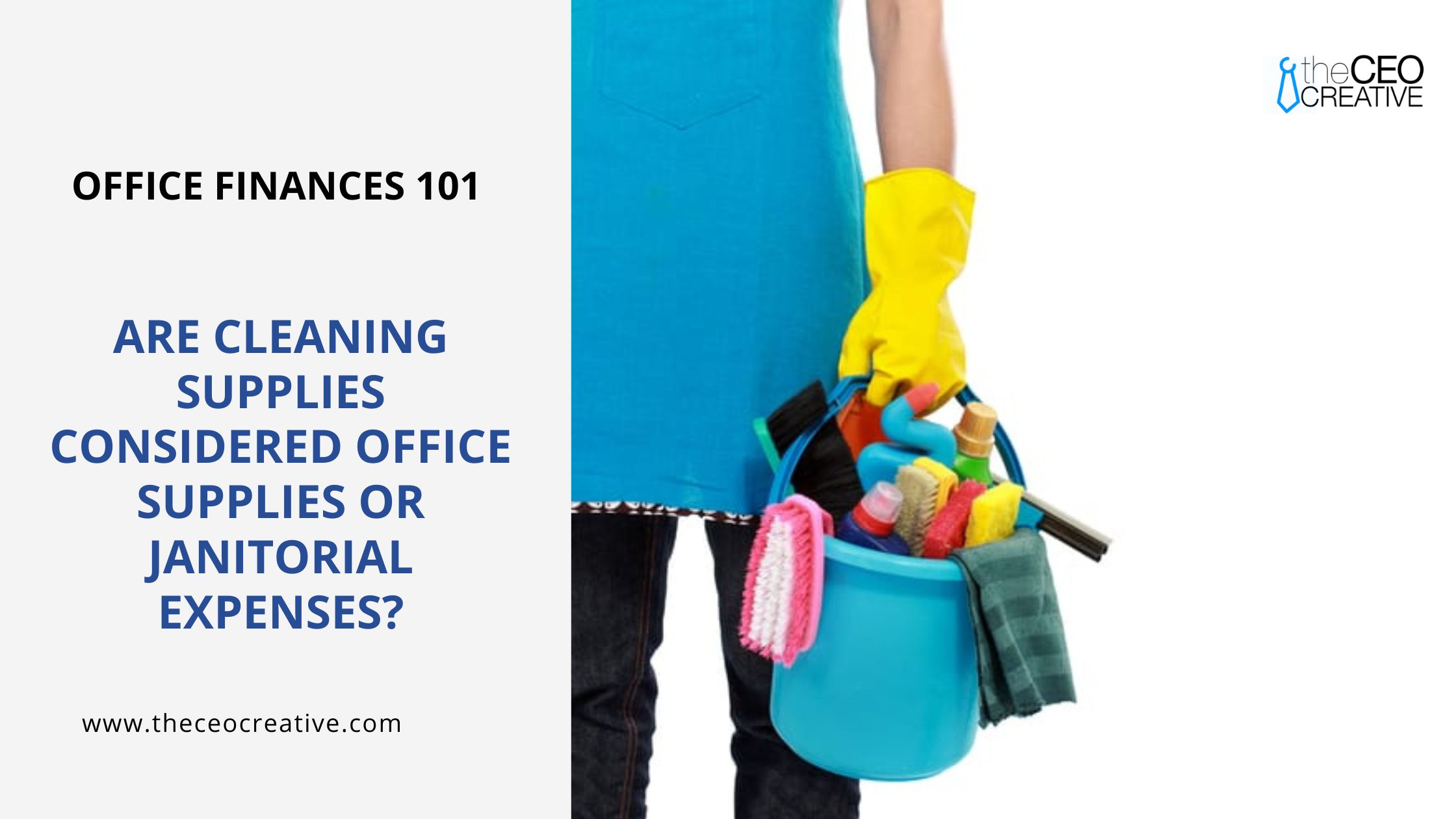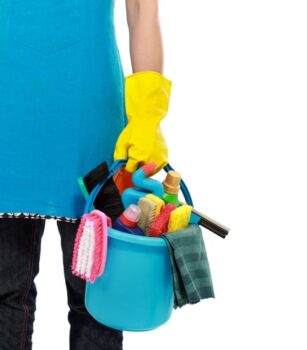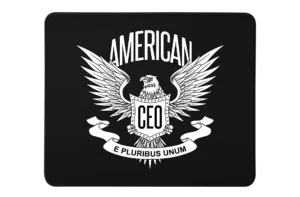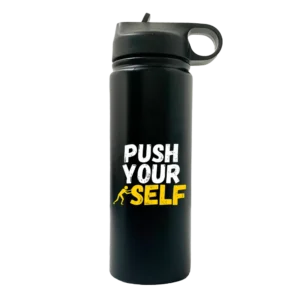Are Cleaning Supplies Considered Office Supplies or Janitorial Expenses?
In terms of budgeting the office, there may be some questions, such as what goes into the office supplies category versus what goes into the janitorial expenses category. This may be an important point of clarity as you look to properly budget your workplace.
Should the mop in the cleaning closet simply be placed into the budget category labeled “office supplies” or should this be considered a janitorial expense? Understanding these categories not only helps in planning your budget but also ensures that financial management within your working space proceeds without hitches.
Now, let’s look at these sometimes confusing categories and see how they could have some sort of impact on your decisions about budgets!
Understanding Office Supplies
Managing office finances can sometimes feel like attempting to paint with a palette of gray. It might not be the most exciting task, but it’s definitely a crucial one. One area that often trips people up is determining what exactly falls under the umbrella of office supplies. Knowing the ins and outs can make budget management a breeze!
Definition and Examples of Office Supplies
In the corporate world, office supplies refer to items that are specifically used for the daily operations of an office environment. These are the tools that can be found in most workspaces to ensure productivity. So what exactly makes the cut?
– Pens and Pencils: The unsung heroes of note-taking.
– Paper Products: Think about the endless stacks of copy paper, notebooks, sticky notes, and file folders.
– Printers and Accessories: Printers themselves might fall into another category, but things like ink cartridges and toner are considered office supplies.
– Organizational Tools: Staplers, paper clips, binders, and document trays keep chaos at bay.
– Technology Supports: Computer mouse, keyboards, USB drives—small techy items that keep our digital world running smoothly.
All these items share something in common—they’re used to carry out work tasks and support day-to-day operations.
Importance of Accurate Categorization
Why does it matter if a pen gets lumped in with floor wax? Accurate categorization of office supplies isn’t just about keeping your asset list neat. It’s fundamental for a handful of reasons:
1. Budget Management: Proper classification helps better track spending and forecast future needs. It aids in setting realistic budgets and prevents overspending.
2. Tax Deductions: In many regions, office supplies can be tax-deductible. Correct categorization ensures you don’t miss out on potential deductions.
3. Inventory Control: Keeping track of office supplies can prevent stock shortages or overspending on items you don’t need.
4. Financial Reporting: Ensures clarity in financial statements, which is essential for both management and investors.
Financial health and clarity rely heavily on being meticulous about which supplies go where. Misclassification can lead to skewed data, affecting how well an office functions and manages its finances.
Difference Between Office Supplies and Janitorial Expenses
Now that we’ve got a grasp on office supplies, let’s zoom in on where cleaning supplies fit into the mix. Are they cozying up with the staplers, or do they dance to a different accounting tune?
Definition and Examples of Janitorial Expenses and Office Supplies
First, let’s explore what janitorial expenses entail. Unlike office supplies, janitorial expenses are tied directly to maintaining and cleaning the office space. They don’t directly facilitate work tasks but ensure the environment is usable and pleasant:
– Cleaning Products: Floor cleaners, window sprays, mops, brooms, and vacuum bags.
– Restroom Supplies: Toilet paper, hand soap, paper towels, air fresheners.
– Waste Management Supplies: Trash bags, recycling bins, sanitizer.
These items play a pivotal role in ensuring the cleanliness and upkeep of the office environment. They may not contribute directly to productivity in the way ink does for a printer, but they keep the workspace functioning smoothly overall.
Role in Office Maintenance and Hygiene
Office supplies and janitorial expenses under one roof serve different purposes. Whereas office supplies deal with business, janitorial expenses tend to hygiene and safety.
– Office Cleanliness: Regular janitor maintenance prevents germs from spreading, creating a healthy environment that can reduce sick days!
– Professional Appearance: A clean environment gives a good first impression to clients and visitors; it speaks to professionalism.
– Safety Compliance: Most places have standards that define cleanliness levels. Keeping up with the supplies for janitorial work puts you in compliance with these standards, hence helping you avoid fines or lawsuits.
The essence of each expense helps in the design of policies and proper budgeting, striking a balance between productivity and hygiene.
Differences Between Office Supplies and Janitorial Expenses
While they may both come under ‘supplies’ in the general sense, office supplies and janitorial expenses are fundamentally varying categories in many respects:
Whosoever the following sets of differences may be considered, for instance, between office supplies and janitorial expenses:
– They are used and serve different purposes: office supplies are used directly in the completion of work tasks. The janitorial supplies keep the infrastructural environmental standards of the workplace up to par.
– Tax Implications: They might have different tax treatments, with potential deductions tailored to each category.
Existing Frequency of Purchase: Office supplies are consumed at various rates depending on the spikes in usage-for instance, if there are high-reporting months, more papers and printing supplies may be in order. Janitorial could be more predictable over time as it is determined more by cleaning schedules.
Line Item Budgeting: Separation of budget lines ensures that expenses are transparent and accountable.
This helps companies navigate finances without mixing these categories and helps them maintain audited-friendly accounts, which are tax-smart and transparent. Distinguishing between the two types of supplies is not only accounting but also one of the most basic things that support effective resource management and strategic planning.
How to Classify Cleaning Supplies in Your Office Budget
What is important in managing the finance of an office, especially when it involves cleaning supplies-which category they fall under, must be made clear precisely in your budget. Categorizing them correctly will help systematize your expenses and ensure each department gets what they need without any extra hassle or confusion. Here’s how you can make sense of it all.
Usage and Purpose of Cleaning Supplies
First things first: What are your cleaning supplies actually used for? That might sound like an easy question, but it has deeper repercussions for classification. Cleaning supplies often serve different purposes depending on where they’re used in the office.
General Office Maintenance: Surface cleaners, cloths, and dusters are used for upkeep; thus, this would keep the office tidy and hygienically correct. They tend to be considered within the rubric of office supplies because they are so crucial to everyday functioning.
Specialized cleaning needs are products like an industrial floor cleaner or a heavy-duty sanitizer; these products are not necessarily used continuously but for specific use, like a kitchen or bathroom. Because of their specialized nature and infrequent use, these also tend to fall under janitorial expenses.
Emergency Cleaning Situations: Supplies used for sudden spillages or accidents also need classification. Although it is not supposed to fall within the budget of purchases, it would be proper to include them in your general armamentarium of readiness supplies.
Knowing these categories will help you in determining whether you are going to write off these supplies under general office supplies or keep it specifically as janitorial expenses.
Frequency and Volume of Purchase
Another important factor in classifying cleaning supplies is analyzing how often and in what quantities they are bought. This ties directly into budget allocation and resource planning:
– Routine Purchases: Items that are regularly restocked, such as hand soap and paper towels, can fit under office supplies due to their consistent presence in the budget. These are predictable, recurring expenses and tend to be bought in bulk.
– Bulk or Wholesale Buying: If you purchase a high volume of specific cleaning products at once to take advantage of discounts, these might be better tracked separately as they impact budget differently than regular purchases.
– One-off Needs: Occasionally, you might need specific products for one-off events, like a big office cleanup. It might make sense to categorize these as janitorial expenses due to their sporadic nature.
By keeping a record of both the frequency of purchase and volume, you can allocate your expenses more effectively. Predicting when and how much you’ll need can lead to more strategic buying habits and better financial management.
Departmental Needs and Allocation
Different departments might have varying needs for cleaning supplies, which could affect how these expenses are classified. Understanding these requirements can ensure that supplies are both appropriately used and budgeted:
– General Office Areas: Supplies needed for standard areas like hallways and cafeterias can usually be listed under common office supplies due to shared usage across departments.
– Specific Department Requests: Departments like IT or Labs may require particular cleaning products for equipment or sensitive machinery. These products can be categorized under janitorial expenses, given their technical nature and specialized need.
– Shared Resources: Consider items shared across departments, such as sanitizers or disinfectants, which should be accounted for in a generalized office supply budget. Proper coordination ensures that these are easily accessible without being tied exclusively to one department’s finances.
Allocating your budget according to departmental needs ensures that all areas receive appropriate attention and resources, without redundant spending. Collaboration with department heads can provide insights into specific needs, leading to a more comprehensive and well-balanced budget.
Using Net 30 for Office Cleaning Supplies
Now that we have discussed the category in which cleaning supplies should fall into, it is time to discuss an effective manner of controlling these expenses with the use of net 30 payment terms. But what does this really mean?
Net 30 is a form of credit arrangement where you have 30 days to pay your supplier from the date of your invoice. It will prove as an excellent tool in managing office cleaning supply purchases for a number of important reasons:
Advantages of Using Net 30
– Cash Flow Flexibility: By using net 30 terms, your company can maintain a more stable cash flow. You won’t need to pay for cleaning supplies immediately, which allows you to stretch your budget further within a billing cycle.
– Building Vendor Relationships: Consistently using net 30 terms can strengthen your relationships with suppliers. This may open doors to future discounts, better terms, or priority services thanks to your company’s established reliability.
– Improved Financial Planning: Having a 30-day period to settle invoices gives you time to align your supply expenses with monthly budgets or financial reports. This cushion can be helpful in months of unexpected spending or when financial resources are stretched thin.
Implementing Net 30 for Your Supplies
Having a net 30 on the invoices does take some work to set up, but the benefits will be long-term:
Vendor Discussions: Discuss payment terms with your vendors to determine if they can extend net 30. While some suppliers may already supply this as part of their business process, for most it may require negotiations.
Accounting Integration: Set up your accounting system to track net 30 invoices and due dates. This will help avoid late fees and keep you in good standing with your suppliers.
Track Usage: Monitor the frequency of use for net 30 terms to balance leveraging credit with financial discipline.
Review Periodically: Periodically go through your net 30 agreements. Analyze and see if they are advantageous compared to immediate payments, or whether the terms could be re-negotiated for better alignment with your financial goals.
By implementing net 30 and monitoring its usage, your company will be able to work with better flexibility in office cleaning supplies management, thus developing more optimized financial strategies.
Be it office supplies or janitorial expenses, management of such purchases may seriously affect your general budget efficiency and company operations.
Impact on Budget Management
It is important to note that knowing whether cleaning supplies will fall under office supplies or janitorial expenses may greatly alter how you conceptualize your office budget.
That sounds like a small distinction, but it can actually make huge differences in how you determine to allocate funds and maintain clarity with your finances.
Actually, being vigilant in this respect-that of classifying purchases-creates a fairly transparent financial picture; thus, one can easily spot trends, cut down on unnecessary spending, and forecast future budget needs.
The right categorization implies that each department would know just how much they could spend in buying items and what their budgetary expectations are.
For instance, suppose you classify cleaning supplies as office supplies; this could give a very high value to the office supply budget and leave little room for paper, pens, and printer cartridges, essential items in the office.
Conversely, treating these as janitorial expenses would give them the realistic and lean office supplies budget necessary for facilitating sound financial planning.
Also, when you’re involved in the management of a business, you have to be concerned about how those expenses appear in your general ledger account.
Precise categorization will keep all of your financial statements accurate and effective in decision-making. It is relevant not only internally but also at the point when auditors or reporters review your accounts.
Mainly, correct categorization smooths the path of effective budgetary management, whereby funds are allocated to where they are most needed.
Tracking and Reporting Expenses
When it comes to tracking and reporting expenses, clarity is key. Implementing a robust tracking system can prevent the confusion that arises from misclassifying costs. Use detailed spreadsheets or budgeting software that allows you to have separate categories and subcategories for office supplies and janitorial expenses. Aim for transparency and simplicity.
– Create clear categories: Make sure your accounting system has distinct categories for office supplies and janitorial expenses. Scanning and filing receipts in the right place from the get-go will save everyone time and stress down the line.
– Regular reviews: Set up a schedule for regular financial reviews. Monthly or quarterly checks can help spot misclassifications early. This way, you’re not stuck with a budget that doesn’t reflect reality.
– Encourage communication: Often, budget mismanagement is a result of poor communication. Keep an open line between departments about what constitutes an office supply versus a janitorial item.
Tracking is all about getting ahead of potential issues and ensuring you’re not caught off guard by end-of-year audits or budget meetings.
Financial Implications of Misclassification
It is shocking how much big financial effects can come from something which seems to be as minuscule as misclassifying expenses. If cleaning supplies are not correctly accounted for, then budget analysis may not accurately assess their expense.
In the long term, this gives a distortion in trend data, which drives management to improper conclusions about spending habits and resource needs.
Secondly, this may involve misclassifications that impact tax filings. There are some expenditures that are deductible or result from different tax treatments; therefore, if recorded badly, it could lead to compliance problems or not being able to capitalize on savings. That’s why your ledger should be clean, just like your office!
Apart from that, systemic classification errors start to erode trust in an organization. The employees who feel that there is no consistency in financial practices may even question the company’s financial health. This may impact morale, with one’s thoughts on how it will affect resources or job security in their department.
Looked at from a broader perspective, cleaning supplies and office supplies may be minute components of the overall company budget, but in order to ensure your company maintains a healthier financial ecosystem, giving equal attention to those small expenses is considered just as valuable.
Conclusion
Whether cleaning supplies go under office supplies or janitorial expenses may seem inconsequential, but it does matter when setting a budget for your company.
Consider whether you buy them frequently and what kind of use they have, and hence classify them appropriately. This mere difference in classification might lead to correct financial recording and hence proper deployment of resources.
Keep in mind that clarity in the books smooths the way not just for budgeting but also in many other facets of your office work. A little attention to detail goes a long way!








